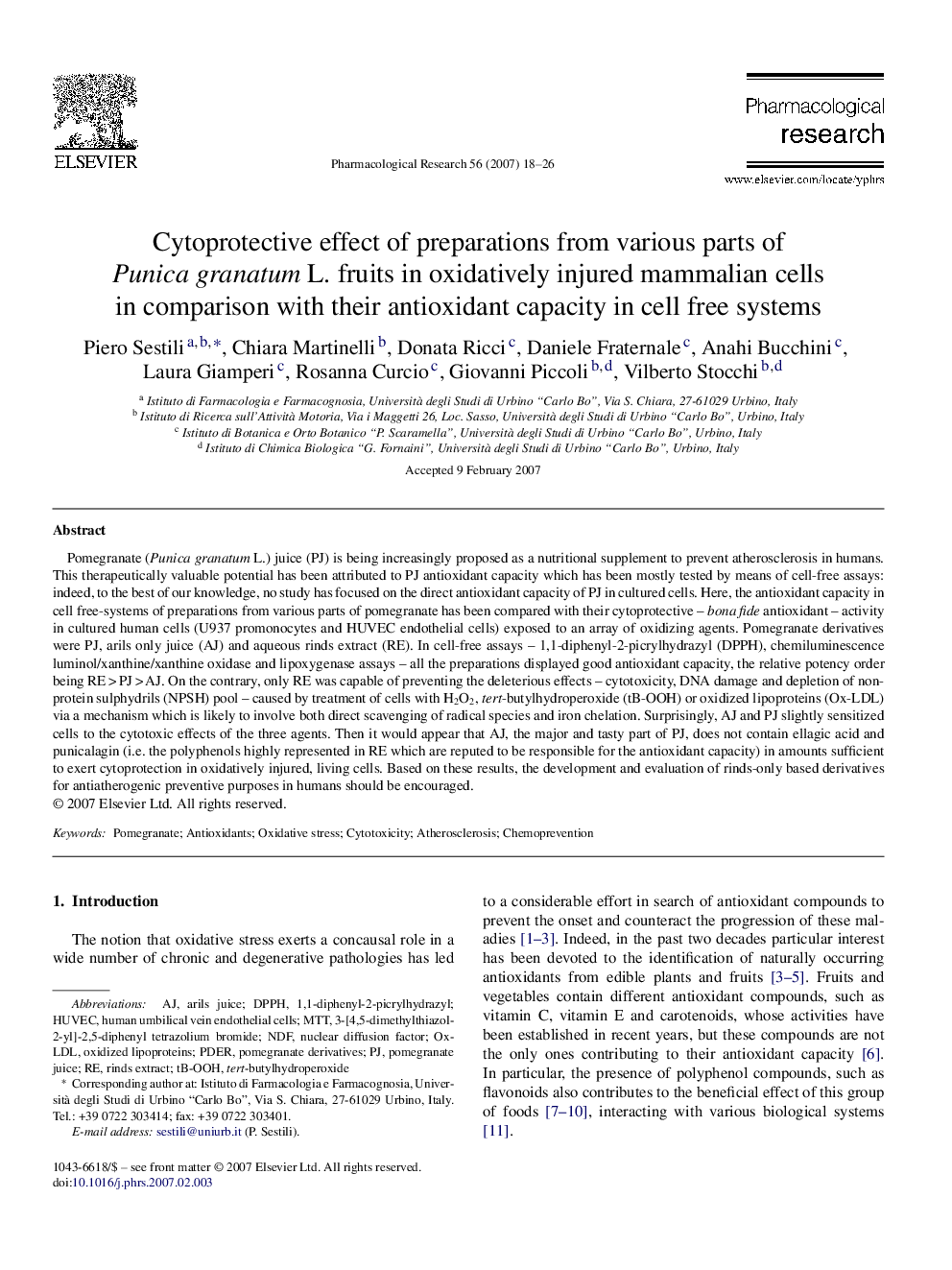| کد مقاله | کد نشریه | سال انتشار | مقاله انگلیسی | نسخه تمام متن |
|---|---|---|---|---|
| 2562963 | 1127330 | 2007 | 9 صفحه PDF | دانلود رایگان |

Pomegranate (Punica granatum L.) juice (PJ) is being increasingly proposed as a nutritional supplement to prevent atherosclerosis in humans. This therapeutically valuable potential has been attributed to PJ antioxidant capacity which has been mostly tested by means of cell-free assays: indeed, to the best of our knowledge, no study has focused on the direct antioxidant capacity of PJ in cultured cells. Here, the antioxidant capacity in cell free-systems of preparations from various parts of pomegranate has been compared with their cytoprotective – bona fide antioxidant – activity in cultured human cells (U937 promonocytes and HUVEC endothelial cells) exposed to an array of oxidizing agents. Pomegranate derivatives were PJ, arils only juice (AJ) and aqueous rinds extract (RE). In cell-free assays – 1,1-diphenyl-2-picrylhydrazyl (DPPH), chemiluminescence luminol/xanthine/xanthine oxidase and lipoxygenase assays – all the preparations displayed good antioxidant capacity, the relative potency order being RE > PJ > AJ. On the contrary, only RE was capable of preventing the deleterious effects – cytotoxicity, DNA damage and depletion of non-protein sulphydrils (NPSH) pool – caused by treatment of cells with H2O2, tert-butylhydroperoxide (tB-OOH) or oxidized lipoproteins (Ox-LDL) via a mechanism which is likely to involve both direct scavenging of radical species and iron chelation. Surprisingly, AJ and PJ slightly sensitized cells to the cytotoxic effects of the three agents. Then it would appear that AJ, the major and tasty part of PJ, does not contain ellagic acid and punicalagin (i.e. the polyphenols highly represented in RE which are reputed to be responsible for the antioxidant capacity) in amounts sufficient to exert cytoprotection in oxidatively injured, living cells. Based on these results, the development and evaluation of rinds-only based derivatives for antiatherogenic preventive purposes in humans should be encouraged.
Journal: Pharmacological Research - Volume 56, Issue 1, July 2007, Pages 18–26